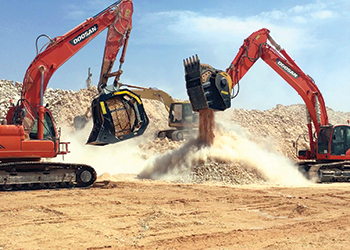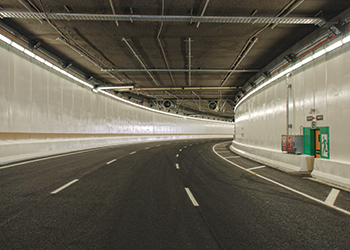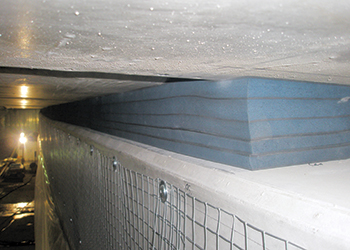
 The Victoria Park Tunnel ... Beele developed a special system for the project.
The Victoria Park Tunnel ... Beele developed a special system for the project.
Beele Engineering offers a wide range of fire-resistant products for tunnels, which are prone to disasters especially arising from transportation of hazardous goods.
Disasters and near-accidents have pushed many countries to impose stricter requirements on the fire-resistance of tunnels used to transport hazardous goods. Among these are the transportation of oil, petrol, gas or chemical products, says to a spokesman for the Dutch firm.
The fire-resistance covers not just the tunnel itself, but also the systems used to seal the transit openings for cables and pipes. Constructional openings such as escape route doors and construction walls also need to be assessed.
Amongst the systems Beele offers to seal the openings for cables and pipes is Nofirno, which can be deployed for both cable and pipe transit openings. The system combines a high degree of fire resistance with sealing against gas, water and smoke.
A case in point is the Victoria Park Tunnel in New Zealand, a closed tunnel which was built using the cut-and-cover principle, and which is a vital part of New Zealand’s road and transportation network. The tunnel is trickier because the opening is not standard.
“The tunnel walls are constructed of prefab concrete elements. There are openings between the separate elements and between the tunnel wall and roof, which could become a potential source for smoke or fire to spread in an incident. This has been prevented because these openings have also been sealed,” the spokesman elaborates.
 |
|
Ultra ... reliable seal between the tunnel and the escape route. |
For the project, Beele developed Actifoam/Ultra, a special fire-resistant sandwich system. Some 4,000 m of it was incorporated into the tunnel. The system guarantees that in the case of fire, the escape routes will stay clear of smoke, heat and flames, the spokesman says.
Actifoam/Ultra consists of several layers of Actifoam and Rise/Ultra rubber which together guarantee the best possible fire resistance. The material is easy to process and can be pressed in so that it clamps securely into openings. Fire resistance can be improved still further by finishing the edges of the sandwich sheets with Nofirno sealant. In the case of fire, this sealant forms a ceramic, protective layer, which ensures that the Actifoam/Ultra material remains intact and can do its work.
The fire-resistant sandwich system has been subjected to the heaviest-possible, two-hour fire test, so that in case an inferno breaks out, everyone is able to reach the escape route quickly.
“These hydrocarbon fire tests actually take into account situations like those which can occur in tunnels where hazardous materials are being transported. Burning tankers or trucks with chemicals can very quickly cause temperatures of up to 1,100 deg C in the tunnel. This rapid and extreme heat rise imposes heavy demands on the fire-resistant sealing system,” explains the spokesman.
“In contrast to the usual tests, which normally take an hour, the Actifoam/Ultra material was tested successfully for fire resistance over a two-hour period, at a temperature of 1,250 deg C. The sealing remained intact throughout the fire test, and no gaps appeared in the sealing,” he says. “Of vital importance is that even after two hours of exposure to this temperature, the temperature on the other side of the wall only rose by 10 deg C. This not only guarantees fire resistance, but also prevents smoke and toxic fumes being able to spread to escape routes, and the escape route is guaranteed to be passable.”
The flexibility of the sandwich construction also ensures that the changing loads and weights of the ground and transport movements above are absorbed, and that protection is offered against the water pressure arising from the water table.





















_0001.jpg)


.jpg)
















.jpg)








.jpg)


